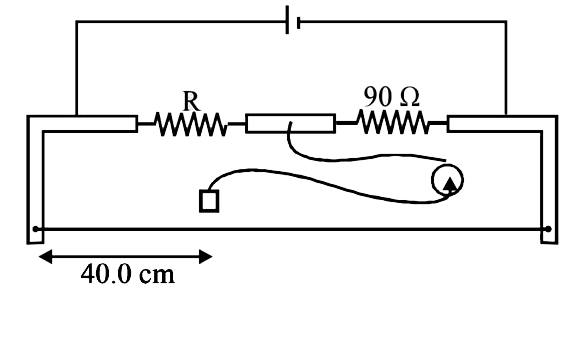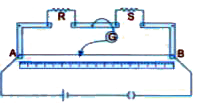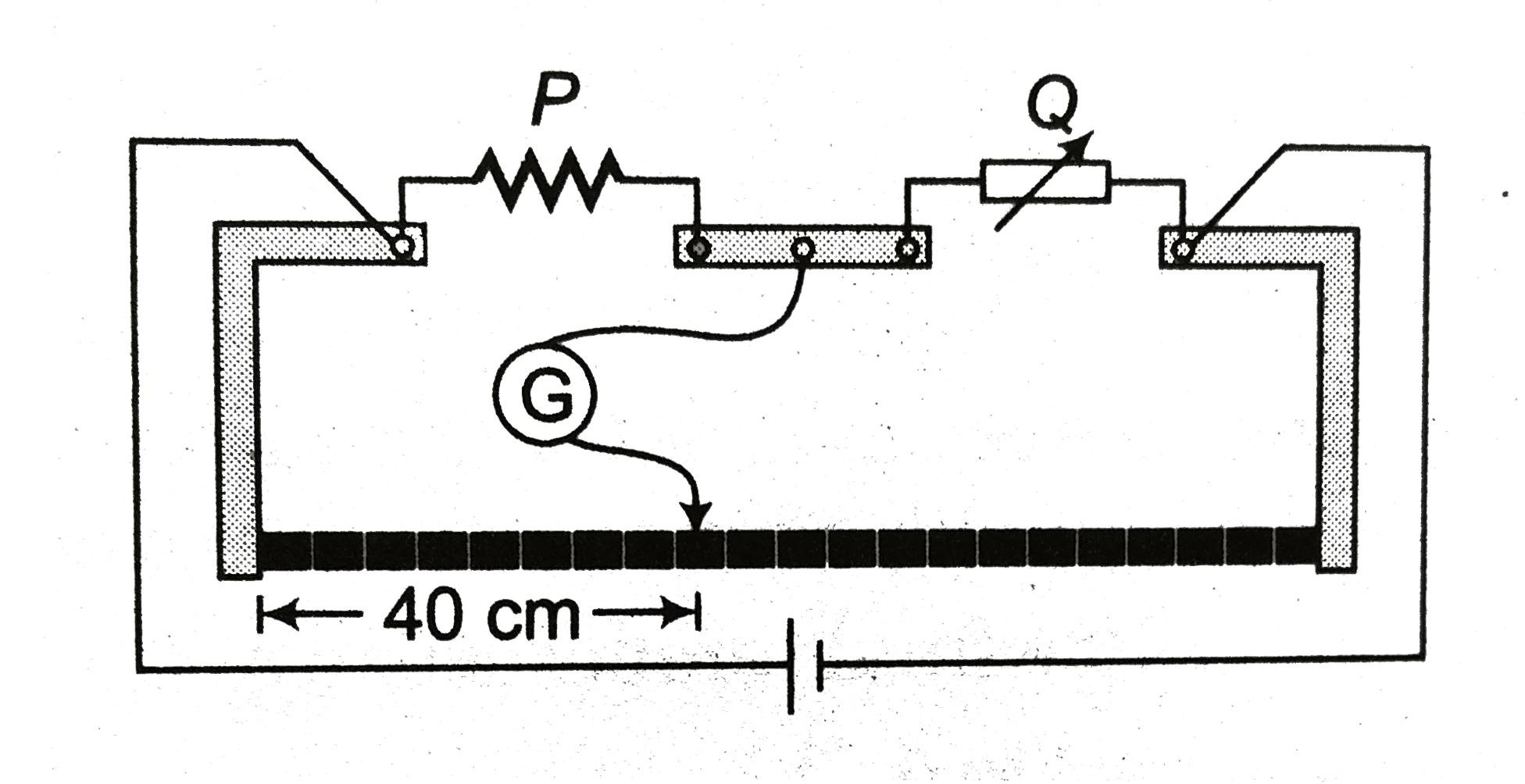During an experiment with a metre bridge, the galvanometer shows a null point when the jockey is pressed at 40.0cm using a standard resistance of 90Ω, as shown in the figure. The least count of the scale used in the metre bridge is 1mm. The unknown resistance is

60±0.15Ω
135±0.56Ω
60±0.25Ω
135±0.23Ω
The correct Answer is:c
R90=4060orR=60Ω
If balancing length of bridge wire zero end is x, then R90=x(100−x)
Taking log of both the sides we get
logeR−loge90=logex−loge(100−x)
Diffrentiating it we get
ΔRR=Δxx−Δ(100−x)(100−x)
Error in R,ΔR=±(Δxx+Δ(100−x)100−x)R
=±(Δxx+Δx100−x)R=±(0.140+0.160)×60
=±0.25Ω
∴R=60±0.25Ω
Topper's Solved these Questions
- BOOK - PRADEEPCHAPTER - CURRENT ELECTRICITYEXERCISE - Jee (main and advance)4videos
CURRENT ELECTRICITY
- BOOK - PRADEEPCHAPTER - CURRENT ELECTRICITYEXERCISE - Interger Type2videos
CURRENT ELECTRICITY
- BOOK - PRADEEPCHAPTER - CURRENT ELECTRICITYEXERCISE - Value based2videos
CURRENT ELECTRICITY
- BOOK - PRADEEPCHAPTER - COMMUNICATION SYSTEMSEXERCISE - MODEL TEST PAPER-29videos
COMMUNICATION SYSTEMS
- BOOK - PRADEEPCHAPTER - DUAL NATURE OF RADIATION AND MATTEREXERCISE - Exercise191videos
DUAL NATURE OF RADIATION AND MATTER
Similar Questions
Knowledge Check
- Question 1 - Select One
In a metre bridge experiment, the balancing length from the left end is found to be 20 cm. If a standard resistance of 20 ohm is kept in the right gap, then the value of the unknown resistance in the left gap is
A5ΩB10ΩC15ΩD7.5Ω - Question 2 - Select One
In a balanced metre bridge, the segment of wire opposite to a resistance of 70Ω is 70 cm. The unknown resistance is
A30ΩB60ΩC90ΩD15Ω - Question 3 - Select One
In a metre bridge , the balancing length from the left end is found to be 40cm, when a known resistance of 3Ω is placed in the right gap, then the value of unknown resistance is
A1ΩB2ΩC3ΩD4Ω
An unknown resistance 'X' is placed in the left gap and and a known resistance of 60Ω is plaecd in the right gap of metre bridge. The null point is obtained at 40 cm from the left end fo the bridge. Fid the unknown resistance.
View SolutionIn a metre bridge the null point is found at a distance of 60.0 cm from A. If now a resistance of 5Ω is connected in series with S, the null point occurs at 50 cm. Determine the values of R and S.
 View Solution
View SolutionAn unknown resistance is placed in the left gap and resistance of 50 ohm is placed in the right gap of a meter bridge . The null point is obtained at 40 cm from the left end. Determine the unknown resistance.
View SolutionIn a metre bridge, the gaps are closed by two resistance P and Q and the balance point is obtained at 40cm. When Q is shunted by a resistance of 10Ω, the balance point shifts to 50cm. The values of P and Q are.
 .View Solution
.View SolutionIn meter bridge , the balancing length from left is found to be 20 cm when standard connected of 1Ω is in right gap . The value of unknown resistance is
View Solution

